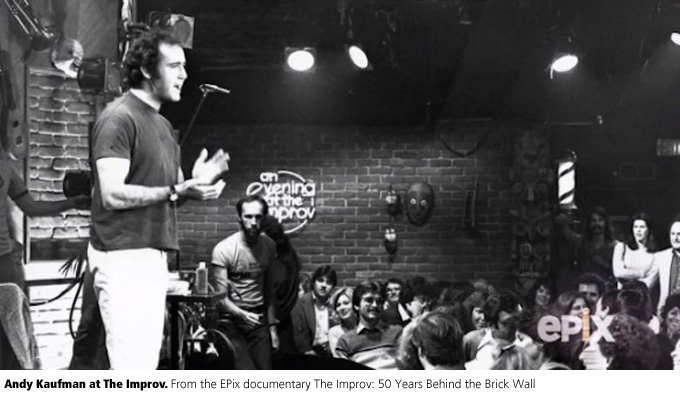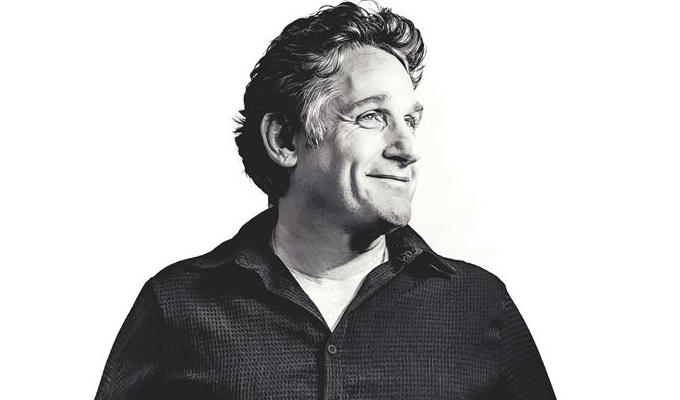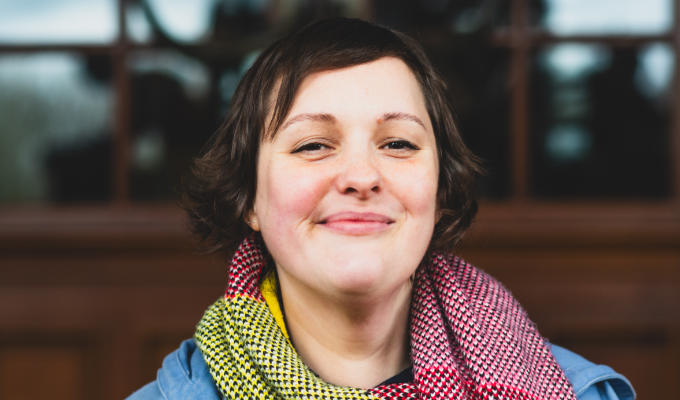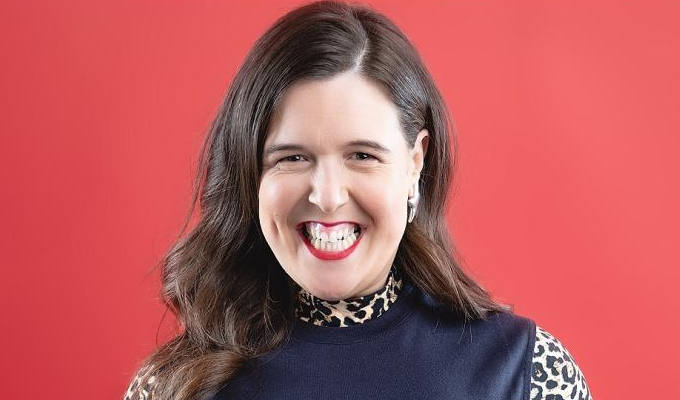
Stand-up's first impresarios
Liam Lonergan charts the history of alternative comedy
In a five-part series, being published across this week, Liam Lonergan, charts the history of alternative comedy in Britain and – in this first article – America.
In the early 1980s Andy De La Tour was part of a loose organisation of performers – mainly Tony Allen, Jim Barclay and Pauline Melville - that wanted to splinter off from other fringe companies operating in London and establish themselves as a separate entity.
They called themselves The Alternative Cabaret. They were stand-ups and ‘would-be poet[s] / anarchist[s] / nutter[s]’ whose mission statement was ‘to be defined by commedia’ and continue a practice that stretched back to the troupes of oiks, harlequins and tricksters from 16th century Southern Italy.
After the satire boom of the 1960s and the demise of Peter Cook’s The Establishment, comedy and cabaret declined in the UK, so regular comedy clubs were thin on the ground. On one side you had the descendants of what Kenneth Tynan called the ‘hairy men’, heated, embattled, socially committed playwrights, like John Osbourne and radical Dworkinists doing bits about extracting male genitalia with a lethal adaption of an ice cream scoop. On the other, you had senile old men with starched collars and boot polish in their hair tapping out of time to Daddy Wouldn’t Buy Me A Bow Wow.
In February 1979, Peter Rosengard, the son of Hebrew Highlanders, occupied the downstairs space of the Nell Gynne Club in Dean Street, Soho, after observing what was going on in the L.A. comedy scene. The premises originally belonged to a Jewish comedian called Jimmy Jacobs but, in 1972, he offered it to fellow comic Don Ward (who had worked with the likes of Cliff Richard, Marty Wilde and Russ Conway), who acquired it for approximately £18,000. (Three months after this transaction Jimmy Jacobs was at a dinner party and, post-punchline, died face down in his soup).
The room underneath the main strip club was called The Gargoyle and it was one of London’s oldest nightclubs. After getting a divorce from his wife in 1978 Ward decided to celebrate by going to America and happened upon the very same Comedy Store. 'I found it fascinating as a comic because this was different comedy to what I was used to,' recalls Ward. 'This wasn’t mother-in-law jokes. This wasn’t manufactured comedy. This was guys and girls standing up on stage talking about their personal experiences; things they had encountered in life.'Later in ’78 Ward met up with Rosengard – a life insurance salesman working for Abbey Life - at a weekend party in Hampshire. The two of them got talking. They shared their recollections of what they had witnessed in L.A. and a realised there was a shared appreciation of the innovative stand-up scene. The conversation evolved into a discussion about transplanting this sensibility and platform into the capital city. Since Ward had the bricks’n’mortar, why not The Gargoyle in Soho?
Rosengard said he followed through with this new venture because he was disillusioned by the lifeless enthusiasms on display at local discos and wanted somewhere to laugh; somewhere away from the 'miserable looking posers'. He wanted to open his own comedy club and bring a piece of what he found in L.A. back over to London. It just so happened that comic and entrepreneur Ward was on the same wavelength.
The owner of the LA Comedy Store was Mitzi Shore, who acquired it in divorce settlement, so her ex-husband could reduce his child-support payments by $600 a month. She dressed it like a bijou apartment and positioned herself as the Beloved Smother of her crèche full of comedians - a play group that included David Letterman and Hollywood director Barry Levison (before he went on to write and direct Diner and Rain Man). She followed in the same vein as Rick Newman, the former owner of Catch a Rising Star on First Avenue, and Gerson “Budd” Friedman.
Friedman, an intimidating man with a stone tablet face and a comic sensibility that was more Borscht Belt than Village disco - started The Improv in New York at the beginning of the 1960s and opened the Los Angeles Improv in 1975 when his wife did a ‘Mitzi’ and acquired the initial club in her own divorce settlement.
Rick Newman, despite growing up in the Bronx like Friedman, was more cocaine ’n’ curls and ruled the place like a genial impresario in a white collar and chocolate brown leather. He opened his basement office up to the most coveted comedians so that became the inner sanctum for the comedy premiership. This was in direct contrast to the love-you-hate-you clinch that was Friedman’s management style. Newman was also more business savvy: putting ads in the showbiz trade papers; generating press coverage by tying up the opening of the club with middleweight champ Rocky Graziano’s birthday; acting as ‘groom of the stool’ to A-list celebrities. Catch A Rising Star and The Improv were the main cornerstones for a group of comics that tried to make it during this era.
They led a nebulous existence: sleeping all day, waking up and watching cartoons, going to the clubs to do their material and then gathering in open-all-hours restaurants at 4:30am to dissect each other’s set. In his book, Comedy At The Edge, Richard Zoglin explains: ‘[These early morning meetings were] a cross between the Algonquin Round Table and Broadway Danny Rose.’ A local Greek restaurant called the Green Kitchen provided a forum for these crepuscular individuals burrowing around the edges of showbiz.
The Improv in New York was around the corner from a butcher’s shop on Ninth Avenue and the neighbouring building of Dyke’s Lumber Yard. It was an incubator for comedians like Andy Kaufman, Richard Lewis, Freddie Prince and that other talk show stalwart - Jay Leno. In the early 1970s – the height of The Improv’s popularity - Jay Leno was just a young upstart eager for five minutes on stage and used to commute back and forth between Boston and New York for the privilege. After his 2am slot, if he was too tired to make the journey back, he would park in the lumber yard and sleep in his car.
His strategy was simply to work harder, and stick to it longer, than anyone else: ‘You’d spend your whole day sitting on the curb, waiting and waiting. Inevitably, somebody in front of you would say, “This sucks!” and walk away. I always enjoyed that. All of a sudden, I had moved up! Without my doing a thing, my standing in show business had just improved!’
When you walked in the door there was a tiny bar (think: plastic pineapple and Babycham), a showroom without much ‘show’ and a rest room with walls and surfaces that looked like a Cy Twombly abstraction made from beer, piss and ‘ya yo’ residue. In what Zoglin called this ‘gritty, no-frills, sandlotish’ environment, Friedman established a mutually beneficial relationship with the guys who graced the stage. ‘He got the talent to perform for free. In exchange, they got a workshop where they could hone their acts, try out new material, and get seen by the agents and managers and bookers who were coming in with growing frequency’.
Jamie Masada was the fourth source of inspiration. He launched the Laugh Factory in Hollywood in 1979 at the age of 16. All of these clubs were a bedrock for a generation of American comics that were tethered to the cultural revolution of the late 1960s and 1970s – a group that started at Lenny Bruce (who died in 1966) and stretched to the rise of Jerry Seinfield in the early 1980s.
The post-Seinfeld boom period saw places like The Improv get assimilated into the culture and clubs were being opened left, right and centre. It was a flooded enterprise and doomed to disaster. Friedman, speaking in 2002, said: ‘Everybody and his brother said, if Budd Friedman can make a success of it, I can do it too, and they all opened comedy clubs in restaurants or over a bowling alley. At the same time, guys who should’ve been accountants or clarinet players became comedians.’
• Part two: The birth of alternative cabaret
Published: 12 May 2014






